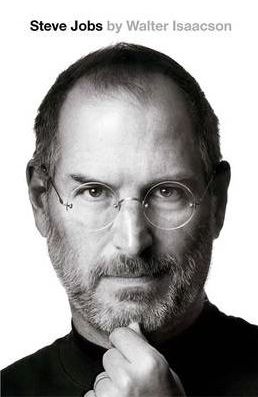Here’s to the crazy one

The book takes one back to the days of Fortran, Eniac, Captain Crunch (the hacker), Atari, Pong, VisiCalc, in case those terms are still in your RAM. Apple was about the only place innovating in a time of cheaply designed generic boxes. Jobs design philosophy “simplicity is the ultimate sophistication” is still very recognizable today, as it was in the early days of Apple. It’s –marketing- philosophy: empathy, focus and impute (google that). Among the many stories, the Xerox Parc heist one makes you wonder where Apple would have been without it.
Central to Job’s thinking was the “whole widget” design: end-to-end control to make the users experience as perfect as possible. Apple was always aware it lives in an ecosystem and that it needs partners and relationships to be successful. But it strongly believes in the one side of the “fundamental divide of the digital age” (closed versus open, or as Jobs framed it: integrated versus fragmented). The Appstore allows the platform to be sort of open, in a controlled way; like in the commons of a gated community. Business wise, that model also made much more sense (Apple was able to maintain great profit margins whereas other computers makers were commoditized).
Jobs was strongly opposed to theft of creative products and it is mentioned as one of the reasons for going in the music industry (iTunes as a legal alternative to ripping of artists). But competitors copycatting Apple’s ideas (“Windows just copied the Mac”) were on the tough side of Job’s dichotomy of this world. Jobs also felt personally betrayed by Google developing Android and saw Google’s “don’t be evil mantra” as just bullshit. You can win a market just by crudely copying the ideas of others, as Jobs had experienced before during the Apple-Microsoft rivalry days. Better read the book to make up your own mind about this!
Jobs seeked a dual legacy with building innovative products and building a lasting company. Future will tell if he has succeeded, but he certainly still is one of the most impressive change agents in the many sectors he was active in. Even if you are vaguely interested in what software can mean to creativity, motivation, expression, connectivity, or if you are just generally interested in what can happen if the arts meet technology, this is a must read.
At least read this book before you carelessly refer to Jobs’ Apple in a PowerPoint presentation (which he really hated, no other wording is possible here). Liked the thank-you remark about an inspiring fourth grade teacher, Imogene Hill, who got Job’s curiosity going. Where would we be without teachers?